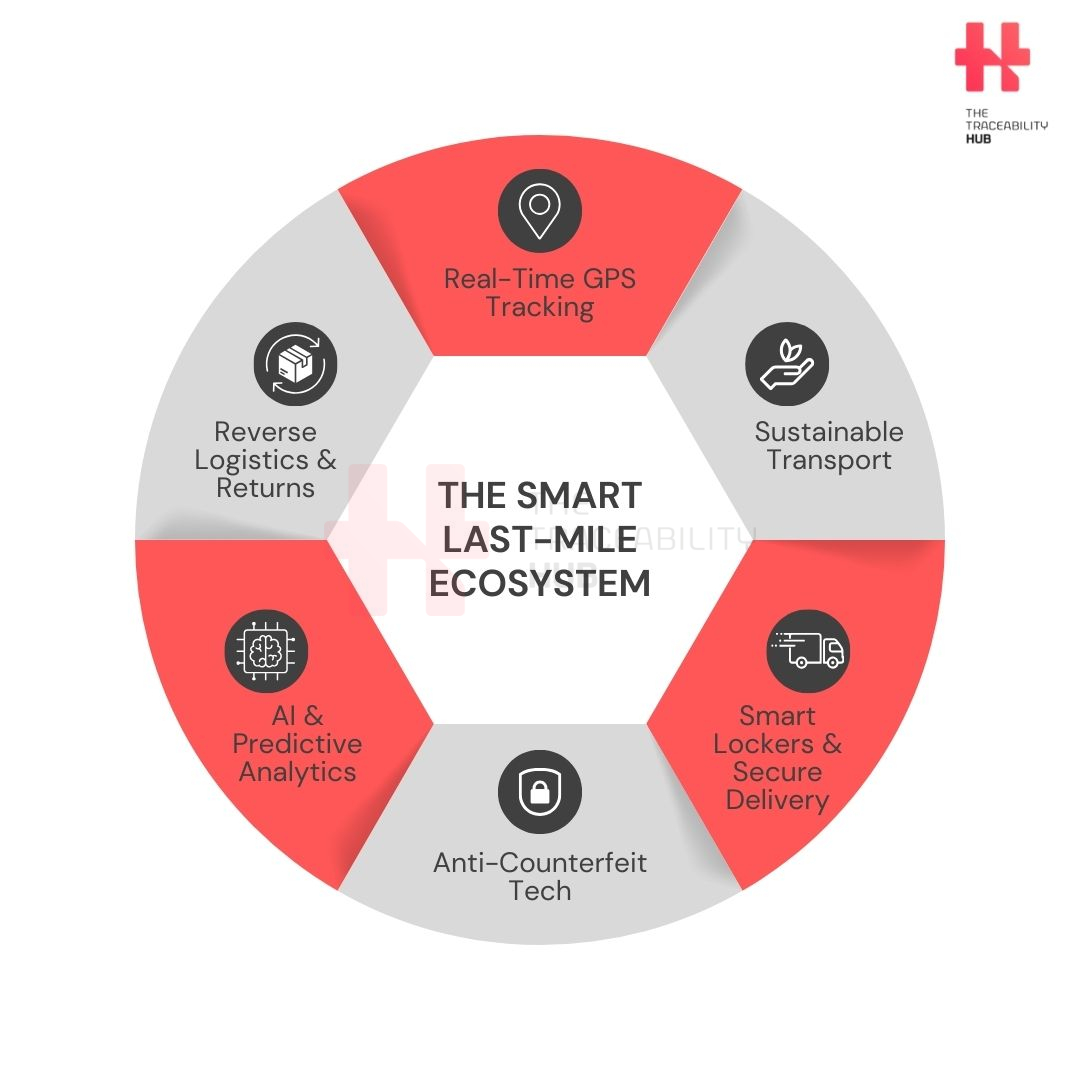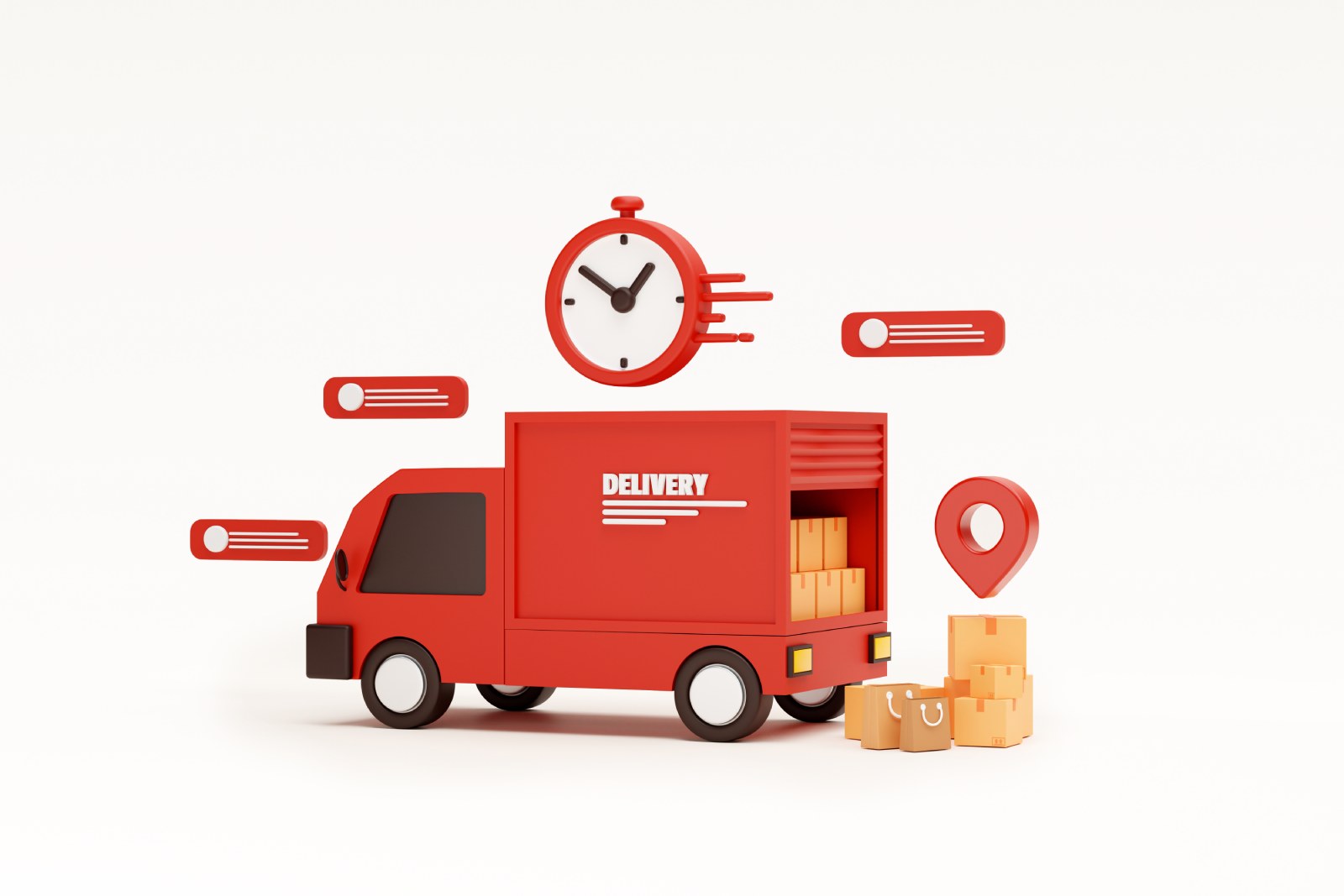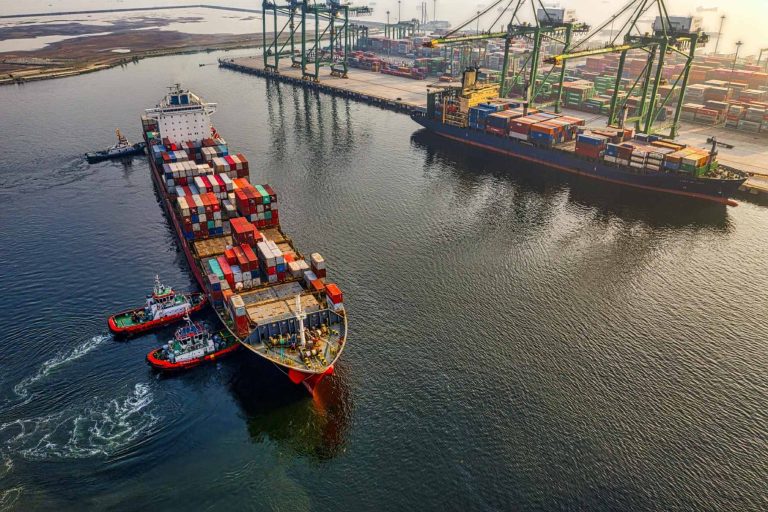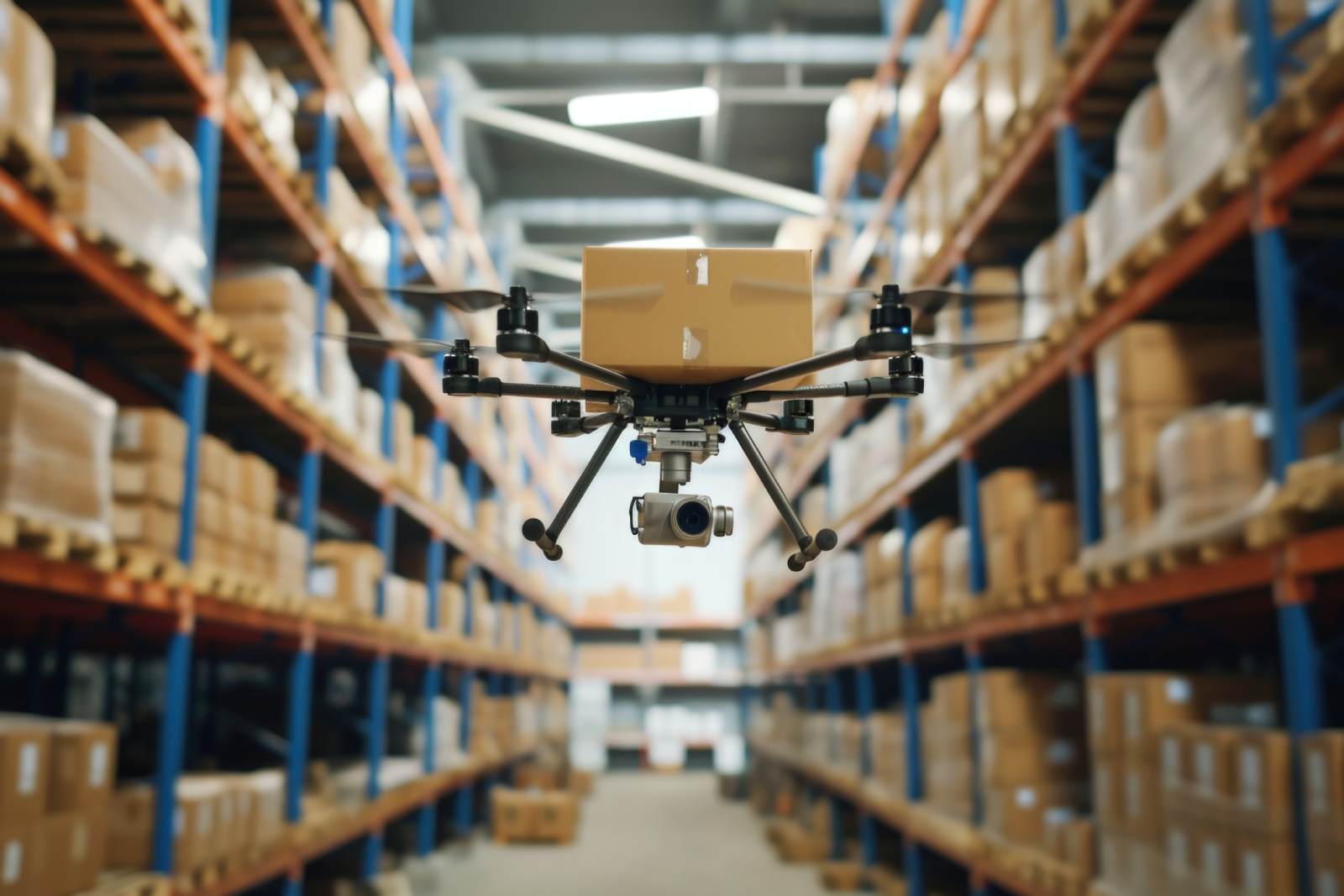Last Mile Delivery Tracking
The last mile delivery process refers to the delivery of products ordered online, from the last node of the distribution network (typically the last transit point of the express courier) to the destination point chosen by the end customer (typically the customer’s home, but also the collection point). If you’ve ever tracked a package online and wondered why it’s “out for delivery” for hours, you already understand the frustration behind the last mile. For businesses, that final stretch from the warehouse to your door is the most expensive and unpredictable part of the delivery chain.
In fact, last-mile delivery accounts for more than half of all shipping costs.
And that’s just the start. Customer expectations are higher than ever, and cities are more congested. So, how are companies responding? Increasingly, they’re turning to last mile traceability technologies like IoT sensors, GPS, blockchain, AI, and digital twins to make that last mile faster and more transparent.
Let’s explore the key challenges and the tech helping overcome them.
The Biggest Challenges of Last-Mile Delivery
The last mile delivery, an extremely challenging process and complex to manage, shows some complexities: the additional activity borne by the retailer, often for one or a few pieces, to be delivered to the customer’s home with extremely short delivery times. Therefore, there is a problem of efficiency and economic sustainability of the business. But also of effectiveness, which includes service, price, user experience, range. And lastly of sustainability, an increasingly important element, as well as a new competitive factor where the vehicle routing and the CO2 emissions are key, where some solutions include powered transportation management system, IoT devices for capturing CO2 and other pollutants in transport, optimization of loading and transport units, and green vehicles.
Last-Mile Delivery: High Costs and Inefficiencies
The last mile may be short in distance, but it’s long on complexity. Delivery vehicles often travel far to drop off just a few packages, reroute frequently due to traffic, and make multiple delivery attempts when no one’s home.
This inefficiency adds up.
Some of the most common issues in last-mile delivery include:
- First delivery attempts that fail, which happen around 30% of the time.
- Trucks that operate below full capacity waste both time and fuel.
- Rising labor costs, especially for urban or remote deliveries.
To fight back, companies are deploying AI-based route optimization last mile tools, building smaller fulfilment centers closer to customers, and experimenting with flexible gig economy delivery models. These initiatives help keep costs in check.
Tracking Last Mile Delivery: The Demand for Real-Time Visibility
Today’s consumers don’t just want fast shipping, they want to know exactly where their packages are and the ETA: Estimated Time of Arrival. But traditional systems often can’t provide accurate or timely updates, especially when third-party carriers are involved.
The main obstacles for the real-time delivery tracking:
- Disconnected systems between vendors, shippers, and retailers.
- Outdated tracking updates that leave customers guessing.
- Limited communication options during delivery delays.
That’s why companies are adopting GPS tracking last mile delivery, automated notifications, and customer-facing dashboards that provide clear, up-to-the-minute information. Some platforms even allow real-time rerouting or delivery rescheduling based on a customer’s availability.
Predictive Delivery Tracking: Rising Security Concerns
With the rise in E-commerce delivery tracking, there has come a wave of package theft, fraud, and counterfeiting. Whether it’s stolen goods or tampered shipments, security failures in the last mile hurt both brand reputation and the bottom line.
Common risks in the last mile traceability include:
- Porch piracy and unattended packages.
- Counterfeit products are entering the delivery chain.
- Product diversion: authentic products are sold through unauthorized distribution channels or in regions not intended by the brand owner. Diversion is leading to counterfeiting, and the opposite.
- Fraudulent rerouting or delivery errors.
To stay ahead, last mile logistics leaders are leveraging secure smart lockers, AI-powered identity verification, and blockchain-based systems that track every handoff and movement in the supply chain. For example, blockchain technology is a hybrid method for overcoming moral hazard and coordination issues in joint distribution (a method to improve courier delivery performance in last-mile logistics).
UPS, for example, uses RFID last mile delivery tags to detect misloads in real time, ensuring packages end up on the right truck.
FedEx is using blockchain to create tamper-proof records for high-value shipments, especially in industries like pharmaceuticals.
Green Last Mile Logistics: Sustainability Pressures Are Growing
The environmental impact of last-mile logistics is coming under increasing scrutiny.
Despite legislative gaps, in 2024 the shipping sector managed to reduce CO2 emissions on its own with investments of 98 billion euros, but delivery trucks contribute to urban air pollution, and packaging waste continues to pile up with every shipment.
The key challenges:
- Carbon footprint delivery tracking: Most last-mile deliveries still rely on fossil-fuel-powered vehicles.
- Delivery time optimization: Urban congestion causes delays and increases emissions.
- Green last mile logistics: Packaging is often excessive, non-recyclable, or both.
Sustainable Last Mile Solutions
Forward-thinking companies are meeting these challenges head-on. DHL, for instance, has deployed more than 27,000 electric delivery vehicles and is investing in cargo bikes for dense urban areas. The company is also expanding its network of smart lockers, which reduces the need for repeat deliveries and lower overall emissions.
A huge lever for logistics efficiency would be a collaborative model between all players in the supply chain: sharing of data and information, through technology and document dematerialization (eFTI – Electronic Freight Transport Information Regulation), digital customs, eFBL (electronic Bill of Lading) and e-CMR ( acronym of the French expression Convention relative au contrat de transport international de marchandises par route), which includes the sender of the goods, the recipient of the goods, and precise information on the type and quantity of goods.
How Traceability Tech Is Changing the Game
To tackle these challenges, last-mile logistics providers are embracing a wide range of technologies that bring greater visibility and efficiency to last-mile operations.
The Smart Last-Mile Ecosystem

Real-Time Tracking with IoT and GPS Tracking Last Mile Delivery
By embedding sensors in trucks and even in individual packages, companies can monitor shipments every step of the way. This improves accuracy and reduces loss.
FedEx’s SenseAware, for example, uses IoT last mile delivery sensors to monitor temperature, humidity, and light exposure. Overseeing these factors is critical for sensitive deliveries like vaccines or high-end electronics. Data is collected throughout the journey and transmitted upon arrival, ensuring cold chain compliance and shipment integrity.
Blockchain in Last Mile Delivery for Transparent, Tamper-Proof Deliveries
Blockchain in last mile delivery offers a way to record every movement in the supply chain on an immutable ledger. This ensures transparency, reduces fraud, and helps confirm that products arrive exactly as promised.
FedEx and UPS are both part of the Blockchain in Transport Alliance (BiTA), where they’re developing shared standards for secure data exchange. FedEx is also piloting blockchain systems in last-mile delivery to authenticate pharmaceutical shipments and guard against counterfeiting.
Predictive Delivery Tracking Logistics with AI and Machine Learning
AI in last mile logistics helps companies get ahead of delivery issues before they happen.
It analyses factors like weather and traffic to predict potential disruptions, have a route optimization for the last mile and suggests proactive solutions.
FedEx Surround uses AI in last mile logistics to identify at-risk shipments and reroute them in real time. Amazon uses machine learning to forecast where demand will spike next and positions inventory, accordingly, cutting down on delivery delays.
Digital Twins: Simulating the Real World Before It Happens
One of the most exciting developments in last-mile delivery optimization is the rise of digital twins. They are virtual models that replicate real-world logistics networks. Companies use these to simulate everything from route efficiency to weather scenarios to equipment breakdowns.
FedEx is using digital twins to test drone routes and autonomous vehicle performance.
This helps reduce trial-and-error in the real world and speed up innovation.
These predictive delivery tracking provide a low-risk environment to test new strategies and identify bottlenecks, helping build a more resilient last-mile system.
Leaders Driving Change in the Industry
- E-commerce delivery Amazon is rolling out over 100,000 electric vans and investing heavily in micro-fulfilment centers near major urban areas.
- DHL is phasing out diesel in cities like Amsterdam and expanding smart locker systems across Europe.
- UPS uses RFID last mile delivery and blockchain to secure cross-border shipments and reduce sorting errors.
- FedEx integrates IoT last mile delivery sensors, AI, and predictive analytics to improve delivery reliability and protect sensitive goods.
Smart Last Mile Logistics The Road Ahead: Smarter, Greener, More Transparent
As urban populations grow and customer expectations continue to climb, last-mile logistics is entering a new era. It is defined by speed and visibility. Smart last mile logistics Companies that invest in traceability aren’t just improving delivery; they’re building trust and staying ahead in an increasingly competitive landscape.
Here’s what’s coming next:
Green last mile logistics: electric fleets & Urban Hubs
Electric vehicles and local fulfilment canters are reducing carbon emissions and getting goods to customers faster.
Delivery time optimization: smarter traffic and route management
AI is analyzing real-time traffic, weather, and delivery data to help fleets avoid delays and reduce waste.
Last mile delivery efficiency: better reverse logistics
Returns (for example also of the returnable assets), are becoming more streamlined with real-time tracking, AI-assisted routing, and a growing focus on the circular economy, where products are refurbished, reused, and resold instead of discarded.
Last Mile Traceability: Final Thought
The last mile traceability might be the shortest part of the journey, but it’s where reputation is won or lost. With the right mix of traceability tools and sustainable practices, companies can create delivery experiences that are faster, safer, and far more reliable for businesses and customers alike.
Read more: Traceability in Reverse Logistics & Returns Management






